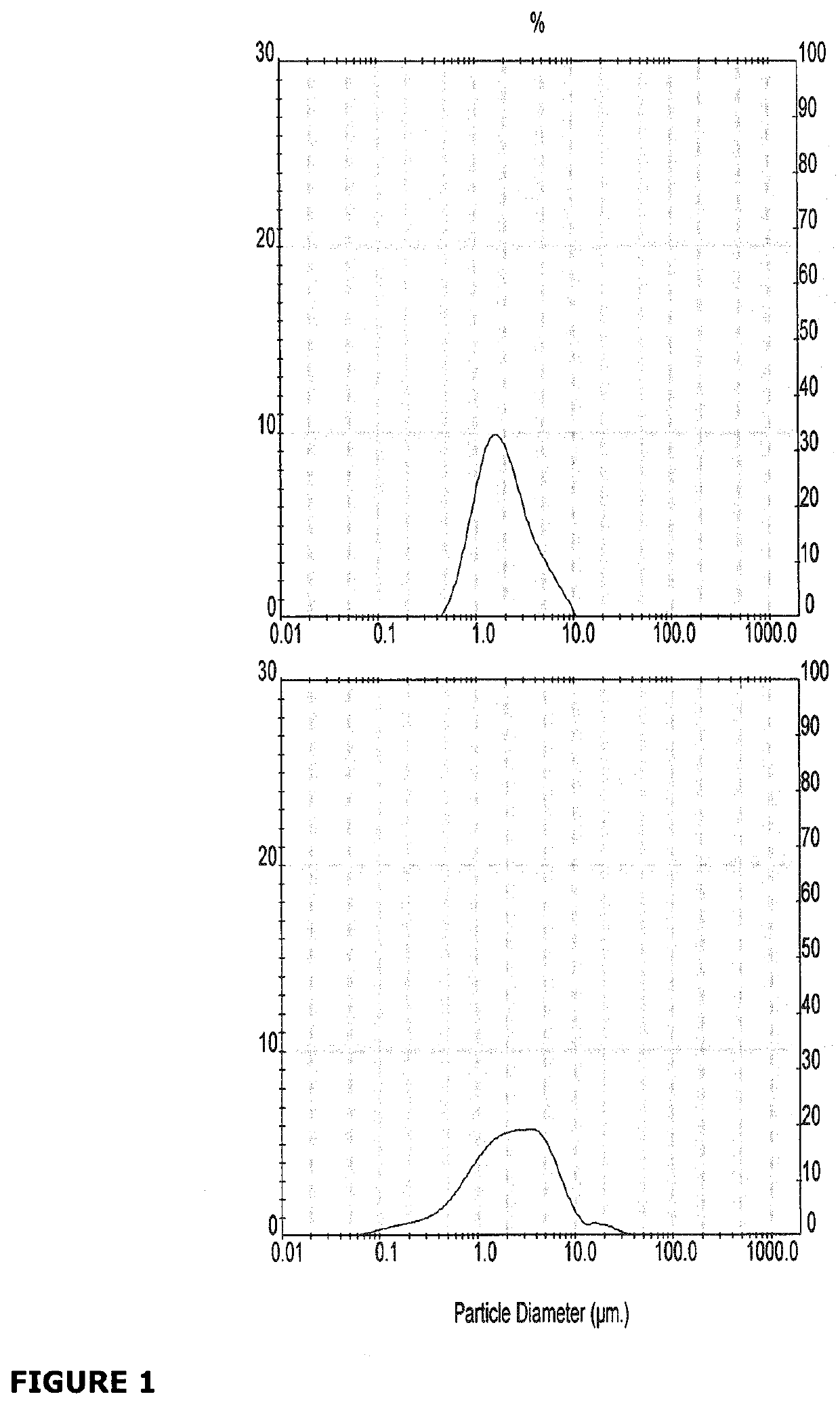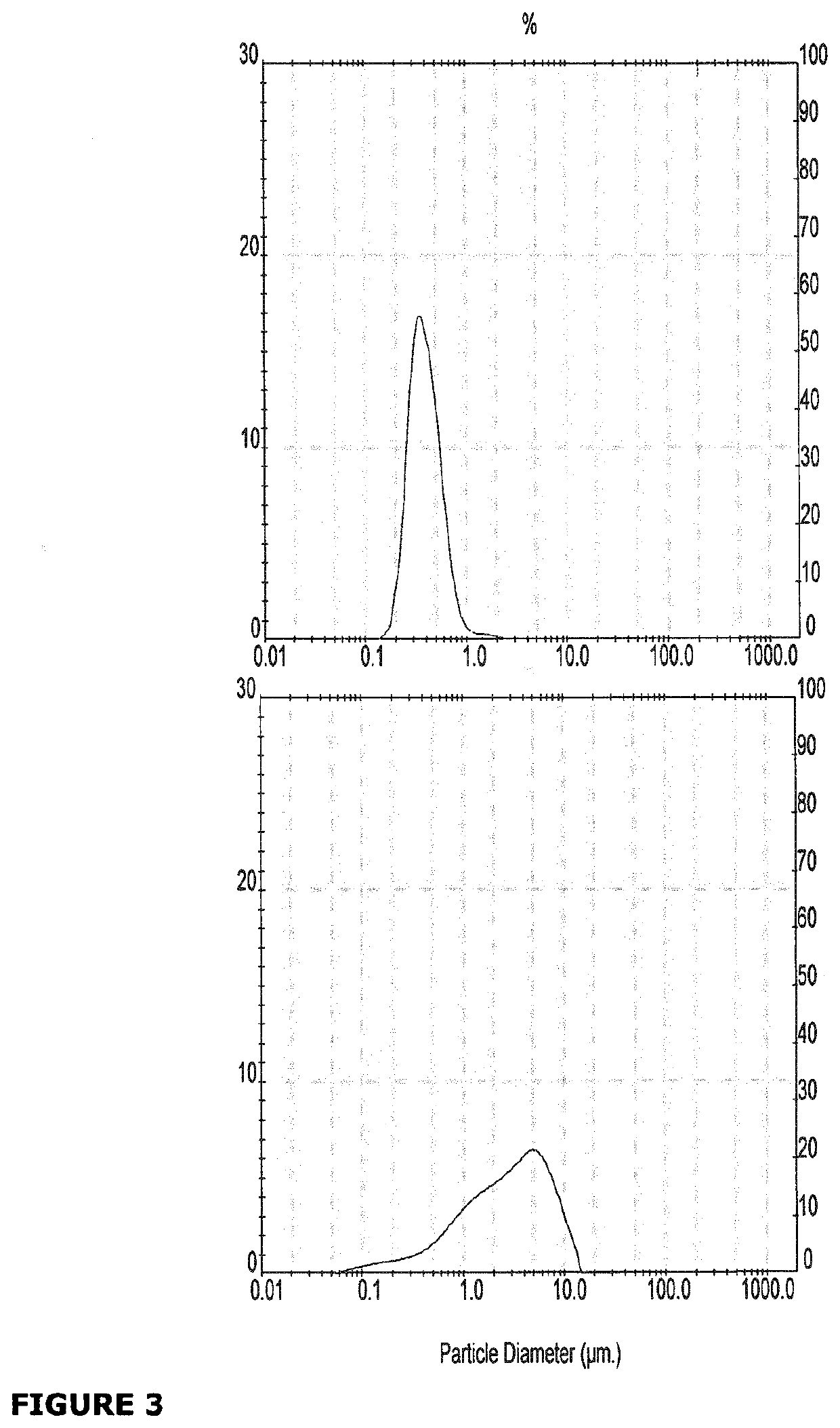Carotenoid coloring composition
a technology of carotenoid coloring and composition, applied in the field of carotenoid coloring composition, can solve the problems of oxidized flavor, unsatisfactory nutritional value, and generation of unwanted yellowish color
- Summary
- Abstract
- Description
- Claims
- Application Information
AI Technical Summary
Benefits of technology
Problems solved by technology
Method used
Image
Examples
example 1
Annatto Colorant in Fresh Cheese Curd
Formulation of Samples:
[0074]Ingredients used were: Demineralized water, 30% beta-carotene (sourced from BASF SE), beta-carotene crystals powder (sourced from Zhejiang NHU Company Ltd.), non-modified starch (sourced from Roquette), calcium caseinate (sourced from Arla Foods), sucrose (sourced from Nordic Sugar), ascorbyl palmitate (sourced from DSM), medium-chain triglycerides (MCT) oil (sourced from Stern Chimie), sunflower oil (sourced from Bressner), lecithin (sourced from Cargill), natural tocopherols (sourced from Cognis).
[0075]List of ingredients for the two fractions is shown in Table 1 and 2.
[0076]
TABLE 1List of materials for emulsified beta-carotene fractionIngredients (BATCH 5624-134)%Water phaseNon-modified Starch2.5Calcium Caseinate7.5Sucrose20Ascorbyl Palmitate1Water48Oil phase30% BC4Mixed tocopherol1.75Sunflower Lecithin1.5MCT oil7Sunflower oil6.75100
[0077]
TABLE 2List of materials for milled beta-carotene fractionIngredients (BATCH ...
example 2
Emulsified and Crystalline Beta-Carotene Controls Color Shade
[0129]This example illustrates how color shade, i.e. between yellowish toward reddish tones, can be controlled by varying the ratio between emulsified beta-carotene and milled, crystalline beta-carotene, which makes it possible to match reddish shade of annatto and go even beyond.
[0130]Emulsified BC fraction—Ingredients used were: Demineralized water, 30% beta-carotene (sourced from BASF SE), sucrose (sourced from Nordic Sugar), ascorbyl palmitate (sourced from DSM), alpha-tocopherol (sourced from BASF SE) and citric acid esters (sources from Danisco).
[0131]Milled crystalline BC (CC Red ID 500)—Ingredients used were: citric acid (sourced from Gadot Biochemical Industries Ltd.), potassium sorbate (sourced from Daicel Nanning Food Ingredients), Glycerol (sourced from Cremer Oleo), Modified starch from waxy maize (sourced from National Starch), beta-carotene crystals (100%)
[0132]
TABLE 8List of materials for emulsified beta-ca...
example 3
on of Gouda 45+ Cheese
Milk
[0163]Milk is pasteurized at 72° C. for 20 sec (organic milk, 76-78° C. for 20 sec) and then cooled to 5° C. The content of protein will normally vary from 3.4-3.7% protein. milk is analyzed on the MilkoScan for fat and protein %. The milk is stored in a cooling room until use.
[0164]The milk for Gouda 45+ production should have a fat content of 3.00% (with protein content of 3.4%) which in the final cheese will result in ˜45% fat in dry matter. The fat-to-protein ratio is calculated. The cheese milk is standardized by adding the calculated amounts of cream or skim milk. After standardization the milk is preheated in the heat-exchanger to the pre-ripening temperature of 32° C. and pumped to the cheese vats. A slow agitation (235 rpm) is continued until rennet is dispersed in the milk.
CaCl2 and Saltpeter
[0165]Saltpeter is added in a concentration of 0.013% being 20 g per 150 kg milk. CaCl2 can be added to the milk at an amount of 0-20 g per 150...
PUM
| Property | Measurement | Unit |
|---|---|---|
| temperature | aaaaa | aaaaa |
| temperature | aaaaa | aaaaa |
| temperature | aaaaa | aaaaa |
Abstract
Description
Claims
Application Information
 Login to View More
Login to View More - R&D
- Intellectual Property
- Life Sciences
- Materials
- Tech Scout
- Unparalleled Data Quality
- Higher Quality Content
- 60% Fewer Hallucinations
Browse by: Latest US Patents, China's latest patents, Technical Efficacy Thesaurus, Application Domain, Technology Topic, Popular Technical Reports.
© 2025 PatSnap. All rights reserved.Legal|Privacy policy|Modern Slavery Act Transparency Statement|Sitemap|About US| Contact US: help@patsnap.com



